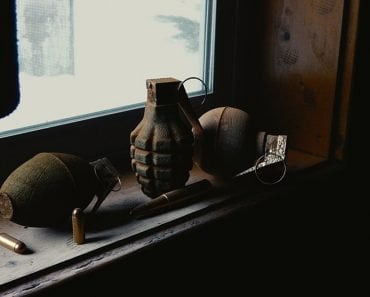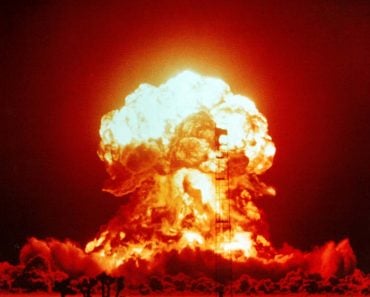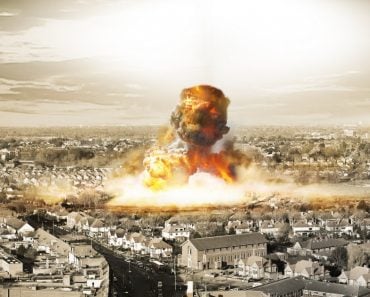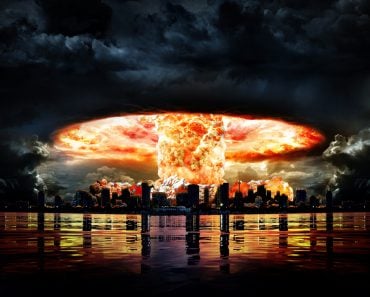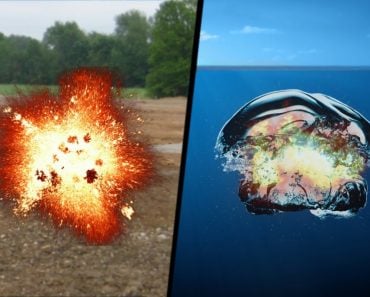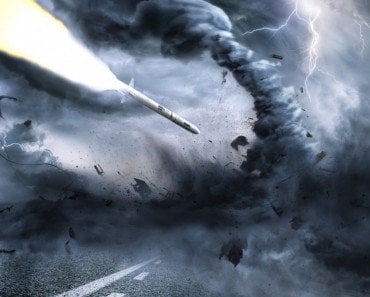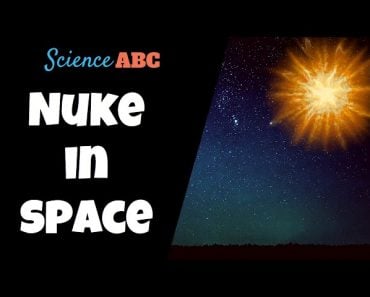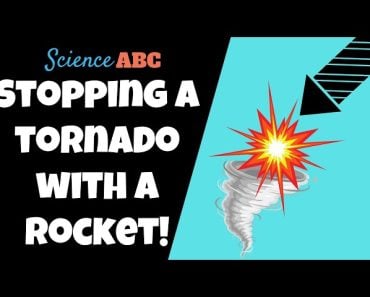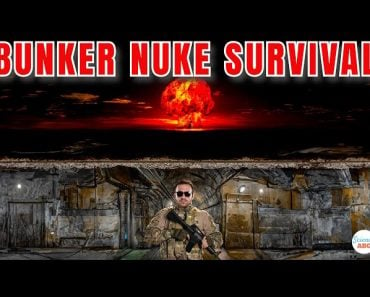Shooting a nuclear missile and causing it to explode is highly unlikely. However, it can disturb the detonation mechanism and prevent a nuclear explosion from occurring.
Poison defeats poison, or so goes the saying. That’s great if one were to restrict their risks to consumable potions, but does this logic extend to nuclear weapons?
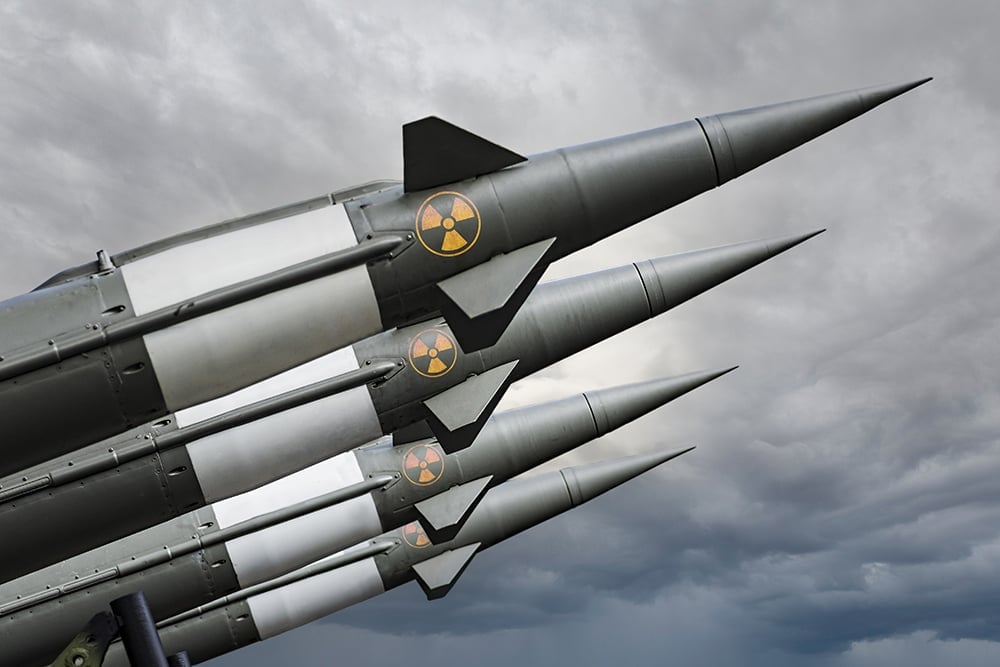
Growing up, we’ve all seen numerous fantasy visuals of weapons colliding in mid-air, only to vanquish each other in futile attempts at war. However, consider the case of nuclear weapons. With even more dangerous terms like critical mass and chain reaction perpetually accompanying them, the chances of the ‘poison defeating poison’ seem bleak.
Basically, can a nuke be shot down without it going off? Let’s find out!
Recommended Video for you:
Would Shooting A Nuclear Missile Cause A Nuclear Explosion?
Theoretically, yes. Statistically (and realistically), no.
In most of our minds, nuclear weapons are akin to cranky but delicate children that must be handled with extreme care, lest they release a loud and uncontrollable tantrum. Nuclear weapons are extremely precise instruments that require a very specific series of events to go off, long before the weapon actually hits the ground.
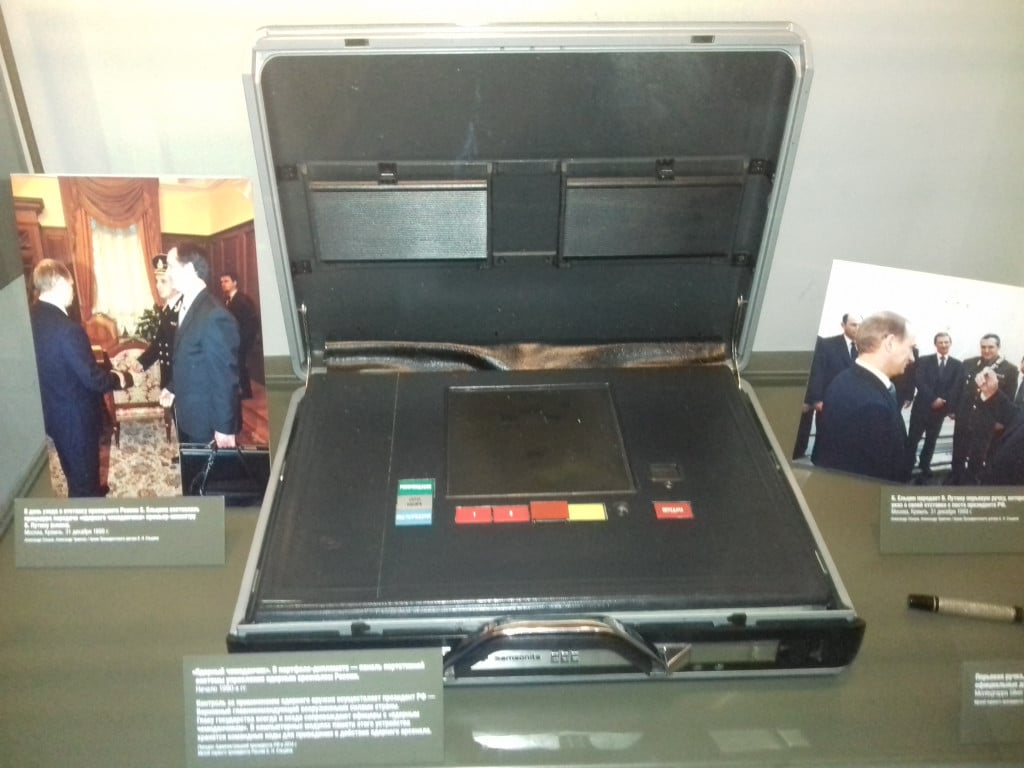
Even slight deviations from procedure prevent these weapons from detonating.This is certainly to humankind’s advantage, as it significantly reduces—if not eliminates—the destruction that could ensue.
Also Read: What Would Happen If A Nuke Exploded In Space?
Nuclear Weapon Mechanisms
The idea behind a nuclear weapon is pretty simple—to utilize the energy resulting from the splitting of atoms (nuclear fission), or the fusing of atoms (nuclear fusion).
A Note On Nuclear Fusion And Fission
Heavier elements in the periodic table are willing to break apart their single heavier nucleus into smaller, lighter and consequently more stable nuclei. This is accompanied by a tremendous release of energy—a process known as fission.
Nuclear fission can be catalyzed by bombarding a heavy nucleus with neutrons. These neutrons get absorbed into the nucleus, resulting in an unstable core, which breaks down to release energy.
Additionally, these neutrons also displace existing neutrons, which then invade the nuclei of neighboring atoms, resulting in a chain reaction.
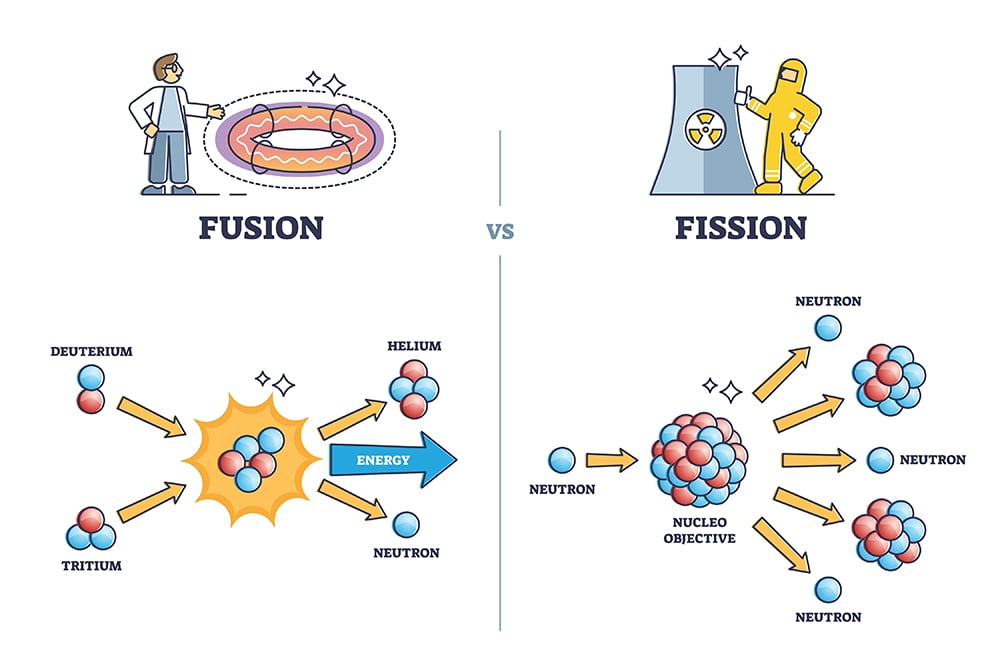
On the flip side, when exposed to extremely high temperatures and pressures, two lighter nuclei can fuse to form a single, heavier nucleus, while also releasing energy in the process. This is known as fusion.
To sustain a chain reaction, a minimum amount of the element in question must be present—an amount known as the critical mass.
Achieving Critical Mass
All nuclear weapons begin with heavy elements (primarily isotopes of uranium and plutonium) as nuclear fuel. To prevent unintentional discharge, the nuclear fuel is kept at a ‘subcritical’ state. When the weapon is armed or activated, the subcritical states are brought to a critical mass state, which allows a chain reaction to be sustained.
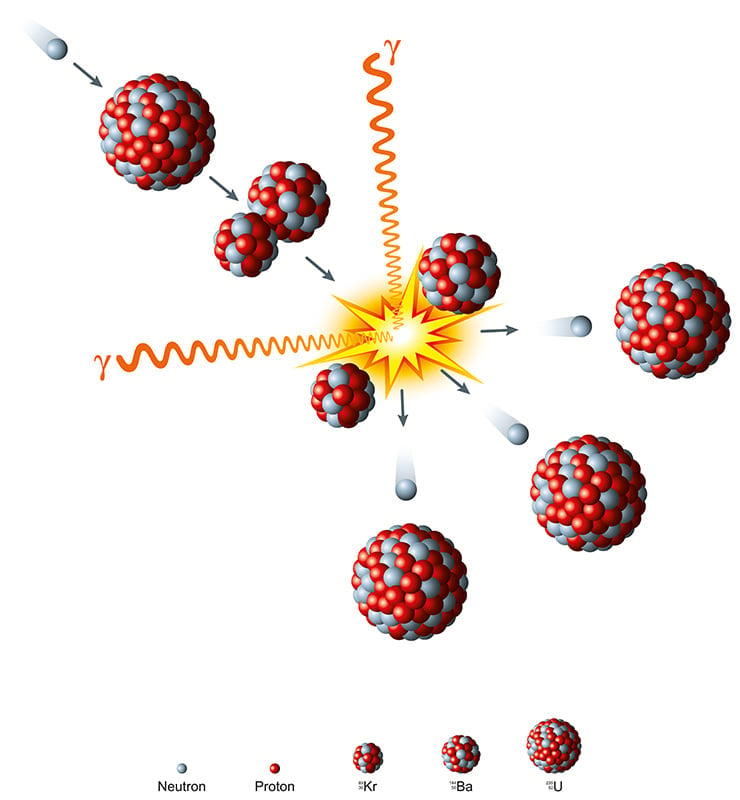
For fission-based reactions, achieving critical mass can be as simple as bringing two subcritical masses together. Fusion, on the other hand, does not require critical mass.
Modern nuclear weapons employ a combination of fusion and fission reactions, rather than relying solely on one methodology. To improve the yield of the nuclear weapon, fusion and fission are incorporated as multiple stages. These combinatory designs result in what are known as thermonuclear weapons.

Operation Castle, conducted in 1954, is one of the first and most notable use cases of thermonuclear weapons that yielded a very high-energy output. It was also the harbinger of dry nuclear ‘fuel’, which would allow nuclear weapons to become truly portable and even more compact. Despite being a test, the explosions resulting from it resulted in fatalities and long-term impacts on survivors in the vicinity of the area where it was conducted. (Source)
Geometrical Considerations
To set off any nuclear explosion, the geometry of the subcritical masses that form the core of the weapon is an important consideration. Originally, for fission reactions, a plug-and-socket type design was used.
In this model, the subcritical masses were machined such that one would perfectly fit into the other. The smaller of the two pieces, similar to a plug, would be propelled by an explosion to fit into the socket, thereby reaching critical mass. However, other geometries that place subcritical cores in close proximity are also used.
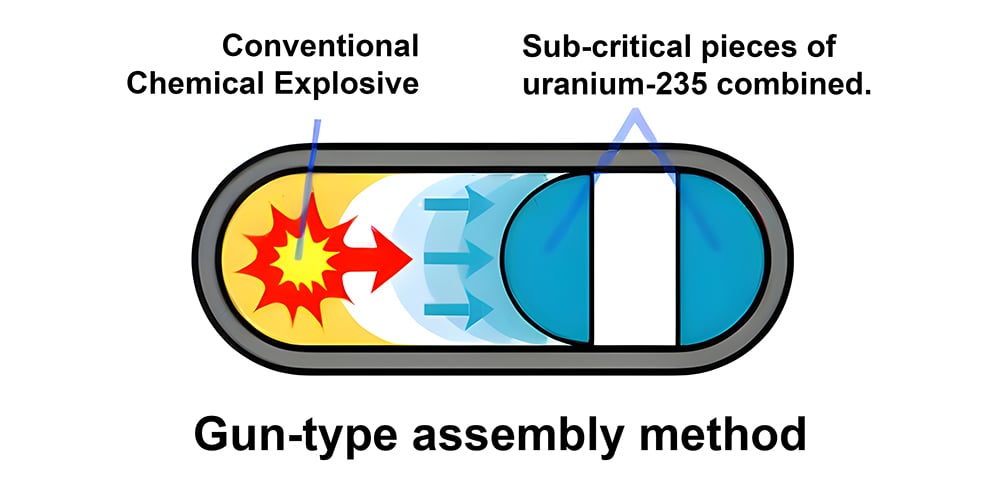
However, such a design was quite unreliable, and was replaced by an implosion-type design, which brings about criticality by compressing the core using immense heat and pressure. To achieve this, the core is machined as a sphere, and then covered by a layer of conventional chemical explosives. This layer is itself wired by switches that must go off concurrently, to ensure symmetric compression of the core.
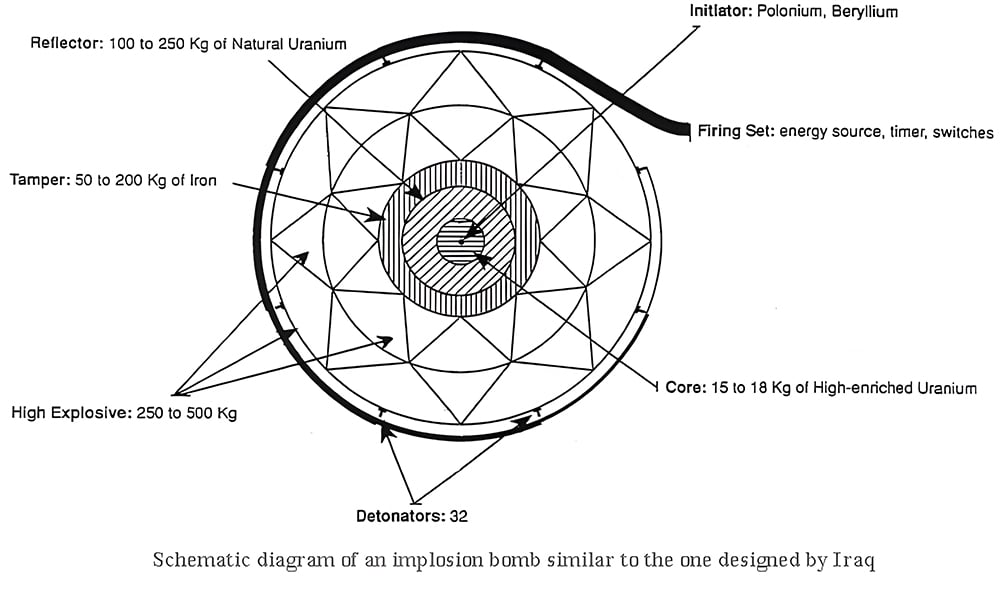
When the core becomes critical, neutrons begin to escape from it, but they are reflected back and focused into it using tungsten carbide or even uranium ‘lenses’ to sustain the chain reaction.
Unlike conventional explosives, the sanctity of this arrangement plays a major role in the success of the nuclear explosion.
Also Read: Why Aren’t We Using Nuclear Fusion To Generate Power Yet?
Delivering A Nuclear Weapon
Original nuclear bombs were standalone devices, delivered to intended locations in aircraft. Modern nuclear weapons are compact and more lethal, and their delivery is unmanned. They are incorporated as ‘warheads’ into the tips of missiles—intercontinental ballistic missiles (ICBMs), to be precise.
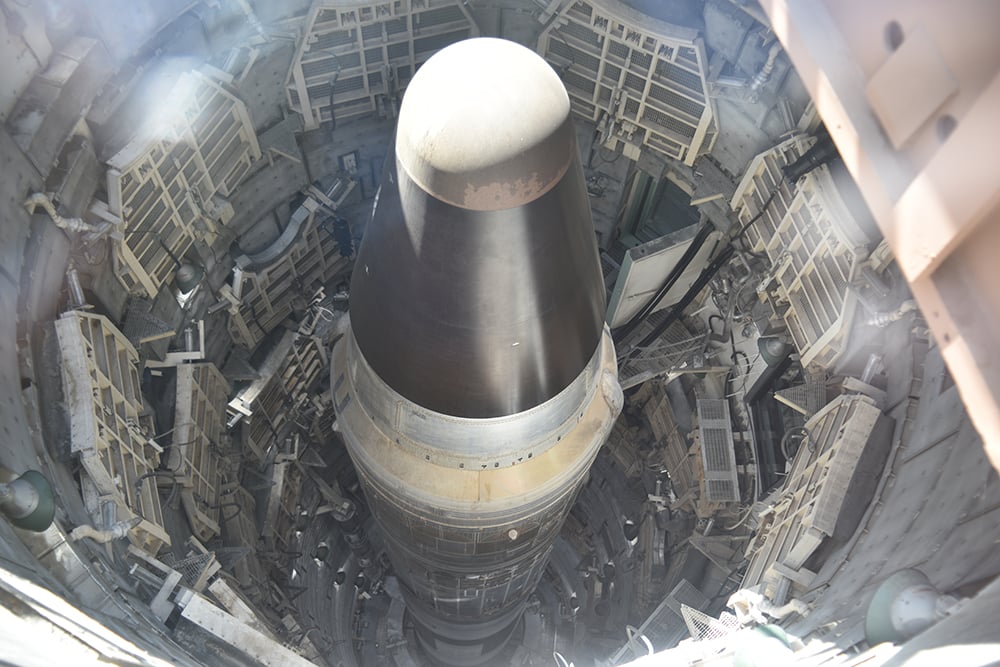
A single ICBM can carry more than one nuclear warhead, in which case it is also known as an MIRV (multiple independently targetable reentry vehicle). Before you proceed further, we implore you to read up on the subject of ICBMs here.
Intercepting A Nuclear Missile
As you may now know, ICBMs are at their most vulnerable during the boost phase. Therefore, countermeasures such as anti-ballistic missiles have their best chances of attacking ICBMs at this stage. However, secondary security measures and stealth technology can prevent anti-ballistic missiles from discovering ICBMs and exploiting this vulnerability.
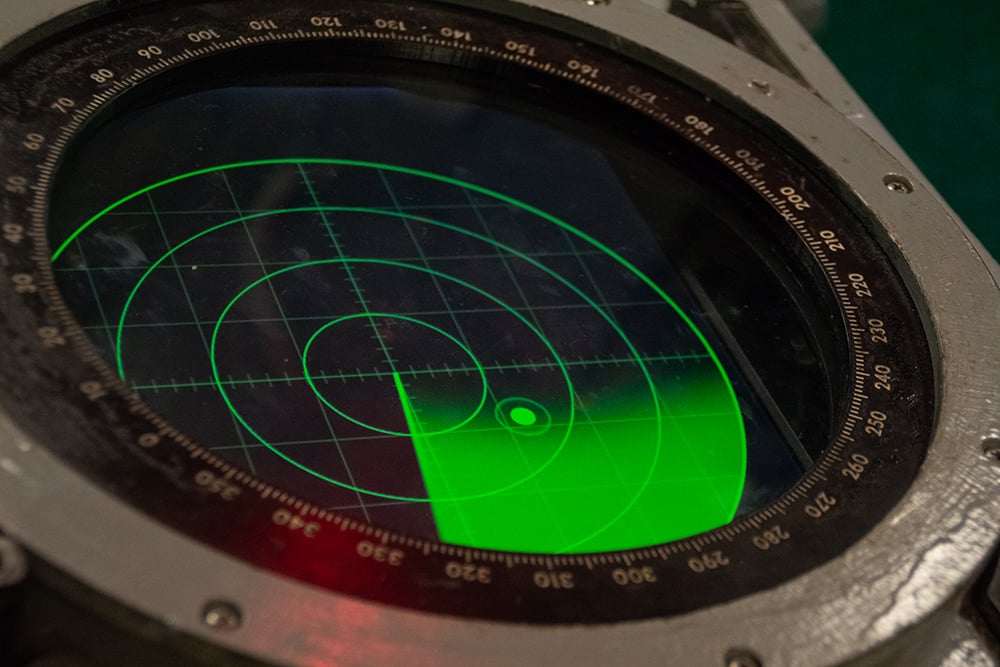
Countermeasures are projectiles, so they have a single point of impact. If they somehow manage to breach the warhead’s core containing the critical mass, they will still do so from a single point. This will disturb the symmetry of the explosion required to start the first fission reaction, so the bomb will most likely end up as a fizzle.
However, damage to the warhead’s canister containing the mechanism can cause its contents to spill out. When these contents fall back to the earth’s surface, they will contaminate the area, which must then be isolated.
Also Read: How Accurate Are Modern ICBMs?
A Note On Accidental Detonation Of Nuclear Weapons
As enumerated above, nuclear weapons are very delicate arrangements that are easily disturbed by external influences. However, the initial explosions that trigger the nuclear core to reach criticality result from conventional chemical incendiaries.
To prevent them from going off accidentally, modern nuclear weapons employ insensitive munitions. These munitions are resistant to external stimuli, such as heat and shock. Thus, even if the projectile of an anti-ballistic missile breaches the core, it cannot accidentally set off the nuclear reaction. (Source)
Also Read: Why Do Some Missiles Explode Before Actually Hitting The Target?
Closing Remarks
Historically, we have come very close to the accidental detonation of nuclear devices several times. However, there has not been a single actual instance of this type. While the event of intercepting ICBMs is itself highly improbable, the detonation of a nuclear bomb due to such a ballistic interception is even more unlikely.
Thus, our original adage of poison defeating poison still holds somewhat true!
References (click to expand)
- Fact Sheet: Ballistic vs. Cruise Missiles.
- Nuclear Weapons Primer.
- Assuring Nuclear Weapon Safety.
- How do nuclear weapons work? -.
- How Do Nuclear Weapons Work?.
- Nuclear Scholars Initiative.
- Bomb Design and Components - Manhattan Project.
- Science > Bomb Design and Components > Gun-Type ....
- Initiators and Polonium - Bomb Design and Components.
- Science > Bomb Design and Components > High Explosives.
- Fuzes and Detonators.
- Hydrogen Bomb - Manhattan Project.
- Implosion Design - Manhattan Project.

